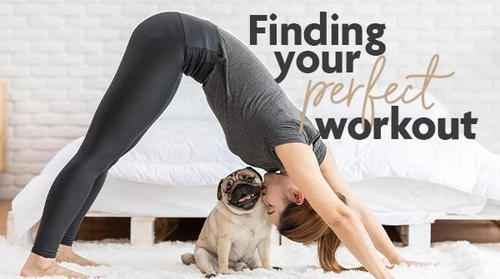If you’re a football player (or the parent of one), you know that warming up is paramount to the pre-game preparation.
The physiological benefits include increasing your range of motion, reducing your injury risk and getting your heart, lungs and muscles ready for some intense exercise. Warming up also has psychological benefits in that you are mentally preparing yourself for battle.
Ultimately, an effective warm-up means you are ready to play at your maximum level, right from the very first minute of the match.
A Warmup for Individuals
The following is one suggested warmup routine
Jogging Forward and Back
Start by jogging from the goal line to the penalty area, then going backwards to the goal line, repeating this 3 to 4 times. Remember to keep your upper body relaxed and avoid striking the ground with your heels when going forward.
Ground Work: Hip, Quad & Groin Stretches
To warm up your hips, you can work on your abductors. These are a group of muscles that primarily function to adduct the femur at the hip joint. To do this you can lay on your side with legs stacked and straight, then raising and lowering the top leg and the adductors, by placing the top leg on the ground in front of you and then raising and lowering the back leg. It is important then to stretch your quads by bending the top knee as far back as you can for 30 seconds. Make sure to alternate between your right and left leg. The final area to stretch is your groin and to do this, open your groin by bringing the soles of your feet together and holding that position for 20-30 seconds.
Side Shuffles
Side shuffles are great fun and really help to increase blood flow. Position yourself into a half-squat movement, then shuffle quickly from side to side, making sure to never let the trailing foot touch the leading foot.
Skipping Forward, Backward & Sideways
Skip forward while circling your arm backwards, then skip backward while circling your arms forward before finishing with side skipping. Afterwards, do forward power skips by jumping as high as you can each time you touch the ground.
High Knees
Essentially, you’re jogging in place, ideally bringing each knee up parallel with the hip.
Front & Cross Leg Swings
Keep your movements slow and smooth, without allowing the force of your movement to do the work for you. It’s all about control.
High & Cross Kicks
Kick as hard as you can without unbalancing or hurting yourself. The idea of this exercise is to build the power you’ll need for proper follow through kicks during game time.
Forward & Backward Lunges
Do forward lunges by stepping out enough to create a 90-degree bend in your front leg, making sure to avoid your back knee from touching the ground. When doing a backward (reverse) lunge, again ensure that the front leg assumes a 90-degree angle.
Backside Kicks
Start slowly, kicking one heel as close to your bottom as possible, then coming down and kicking up the other heel. As your quads and knees warm up, slowly increase the kick frequency and start pumping your arms.
Two-Footed Jumps
Jump as high as you can, like you do when you’re heading a ball.
Single-Leg Hops
Go into a quarter-squat before propelling yourself upwards; try to land in the same spot and the same position.
Jog-Run-Sprint
Start by jogging from one end of the football pitch to the other, breaking into a run when you hit the penalty box. Then hit a full sprint when you reach the halfway line before breaking it down into a jog at the opposite penalty box.
Three Team Warmups
While warming up by yourself is crucial to your own success, it’s also important to warm up with your teammates as well. Here are a couple of common drills.
Passing Relay
Set up two relay lines with cones placed about 12 yards apart, each with a group of players and a ball behind one of the cones. The players at the front dribble down to the opposite cones and then pass the balls to the next two players before returning on the outside.
Keep ball
Keep ball is a great drill to force players to not only work on their skills but also learn how to make quick decisions about the best angles for passing, receiving and blocking. Have eight players form a circle about 10 yards across with two players in the middle. The players on the circle then try to complete as many passes as possible while the players in the middle make attempts to block.
**These statements have not been evaluated by the Food and Drug Administration. This product is not intended to diagnose, treat, cure or prevent any disease.



